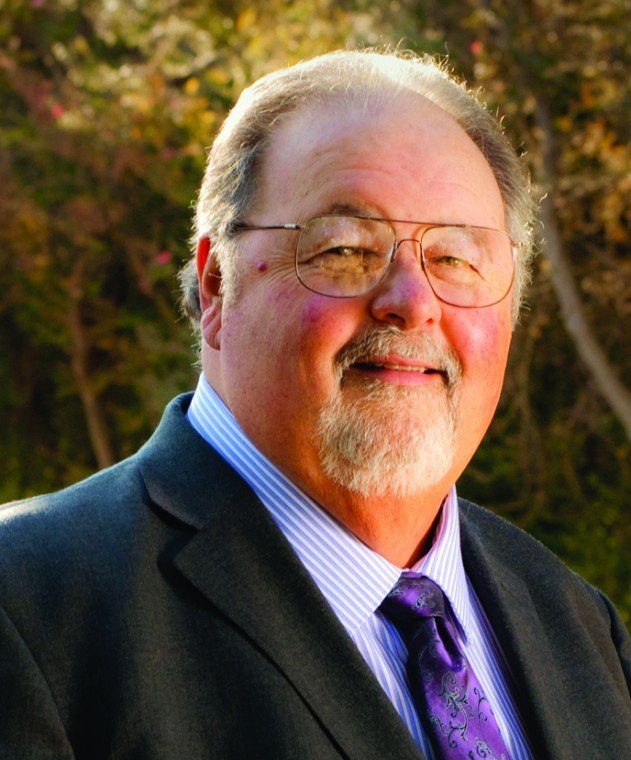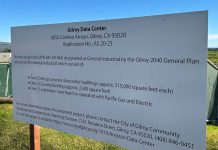A national economy that continues to languish in the doldrums along with years of dwindling social services funding from the state has prompted Mayor Don Gage to create an Interfaith Task Force.
The aim of the ambitious project is to help relieve overburdened programs that provide humanitarian outreach in Gilroy.
“The reality is that we don’t get any money,” Gage said, referring to social services funding from the county and state.
One example is the $20 million cut CalWORKs – a welfare program that gives cash aid and services to eligible needy California families – suffered to its funding for 2012-13 which rippled out across all 15 cities in Santa Clara County.
“Where’s the relief?” Gage asked. “How do you balance that?”
Against a backdrop of chronic state and county budget cuts, Gage issued a clarion call March 25 asking local spiritual and religious leaders to attend a forum and figure out how to synchronize the individual services they offer to better serve the community.
Executive Director David Cox of St. Joseph’s Family Center, located on the St. Mary’s Parish campus at First and Church streets, knows all too well about funding cuts to critical outreach services.
“Two years ago our county funding went from $130,000 down to $30,000,” said Cox. “At the same time, more and more people keep accessing our services.”
The cuts forced St. Joseph’s to ax a program and to let some of the staff go, he said. Even though Cox wasn’t present at the inaugural Interfaith Task Force meeting, he is going to the next one to put across some of his ideas about practicality and sustainability.
“We can’t just go on our passion,” remarked Cox. “We need to be a little logical about this.”
A total of 15 pastors and priests from around the city answered Gage’s call a couple weeks ago by attending the inaugural meeting at the Gilroy Senior Center on Hanna Street.
Creating a blueprint for a homegrown social services program is at the core of Gage’s initiative. The mayor envisions a non-denominational organization spearheaded by various religious leaders that serves as a safety net for Gilroyans who need more help than what the county and state can provide. According to Gage, that could include the City website hosting an online database of the different social services programs being offered by members of the interfaith network.
But first, Gage said, “I need the opinions of people out there … lots more hands will make the work lighter.”
Lead Pastor Malcolm MacPhail of New Hope Community Church has served Gilroy for 21 years and was at the inaugural interfaith meeting. In that timespan, he’s served on Gilroy’s Gang Task Force and been on the front line of the street-level battle to reach and help members of the city’s most at-risk population.
MacPhail’s initial homework from Gage, like the other attendees, was to go away and tally up exactly what services were offered at his ministry. At the next scheduled meeting, MacPhail said, Task Force members will have a session of show and tell.
That way, “If we’re out of budget for the month, we can direct them to someone who can help,” MacPhail explained. “We can spread the wealth.”
As the country continues to find its footing in the post-Great Recession era, The Compassion Center (which is different from the Gilroy Compassion Center) at New Hope Community Church on Muraoka Drive invites locals to come in and take food boxes that are left in the foyer or office during regular office hours on Sunday mornings or Wednesday nights.
Gage wants the Interfaith Task Force to bolster and complement already existing social services organizations such as St. Joseph’s Family Center and the Gilroy Compassion Center at 8425 Monterey Road, rather than evolve into a separate entity.
Cindy McCown, senior director of program services and advocacy for Second Harvest Food Bank, which serves Santa Clara and San Mateo counties, is impressed by Gage’s plan to bring Gilroy’s religious and faith-based entities under one unifying umbrella. When it comes to funding, Second Harvest finds itself in a similar position to St. Joseph’s Family Center.
“Funding has stayed flat as the need has escalated,” said McCown. “Since 2007, the number of people accessing the food bank has jumped by 50 percent.”
As more and more clients look to the food bank for relief, explained McCown, she is excited by the possibility of another tier of assistance in the community.
“Faith communities work with some of the hardest to reach people,” she added.
Gilroy’s faith community is made up of 32 churches. The first meeting of the Interfaith Task Force had 15 people in attendance. That may seem small, Gage noted, but he expects more local leaders at the next meeting scheduled for 7 p.m. April 29.
“It was a great meeting. Everybody was enthusiastic and ready to work,” Gage remarked.
Father Robert Brocato of St. Mary’s Parish, which serves thousands of families in Gilroy, was not in attendance at the first gathering but said he plans to attend the next one.
From a spiritual and religious standpoint, MacPhail – who pointed out that “oftentimes, pastors get locked into their own circles” – is impressed by the newfound breaking-of-bread approach that is galvanizing the city’s various denominations and faiths, which includes the Church of Jesus Christ of Latter-day Saints, Methodists, Catholics and Presbyterians and many more.
Pastor Greg Quirke of South Valley Community Church (SVCC) in Gilroy agrees that looking past the ideological fences that separate their flocks will allow the Interfaith Task Force to get down to business in Gilroy.
SVCC, which has been serving locals for more than 25 years from its main campus located at 8000 Santa Teresa Blvd. in Gilroy, already collaborates with the Gilroy Compassion Center and St. Joseph’s Family Center to help direct people to local services available. Quirke is excited about the prospect of bolstering his church’s commitment to community service through strengthened ties and heightened communication with other religious organizations.
“We can network with one another better,” agreed Quirke, who added that he is looking forward to having a “sense of the resources” that are out there.
Councilman Dion Bracco also voiced a desire to get a multi-faith entity up and running in Gilroy during his mayoral campaign in 2012.
“Faith-based groups are better equipped to deal with social issues like homelessness,” Bracco said. “It’s something we talked about several times at the Gilroy Compassion Center.”
As the Task Force prepares for its next meeting later this month, MacPhail hit on the overarching goal of a unified front as everyone comes together to serve and support the neediest in the community.
“Let’s not look at our theological differences, but how we can work together for the community,” he reasoned.













